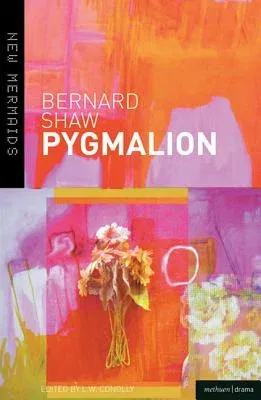Bernard Shaw
(Author)Pygmalion: A Romance in Five ActsPaperback, 30 May 2008

Qty
1
Turbo
Ships in 2 - 3 days
In Stock
Free Delivery
Cash on Delivery
15 Days
Free Returns
Secure Checkout

Part of Series
New Mermaids
Part of Series
Methuen Drama Modern Plays
Print Length
208 pages
Language
English
Publisher
Methuen Drama
Date Published
30 May 2008
ISBN-10
0713679972
ISBN-13
9780713679977
Description
Product Details
Author:
Book Format:
Paperback
Country of Origin:
GB
Date Published:
30 May 2008
Dimensions:
19.3 x
12.7 x
1.52 cm
Genre:
British
ISBN-10:
0713679972
ISBN-13:
9780713679977
Language:
English
Location:
New York
Pages:
208
Publisher:
Weight:
181.44 gm